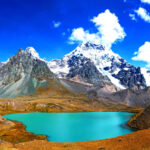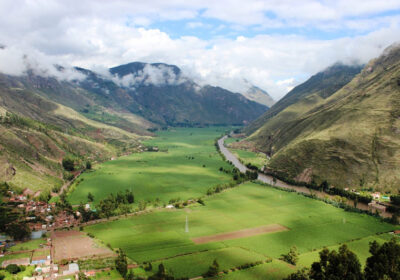
Waqrapukara Inca Fortress
Discover Waqrapukara, a stunning Incan archaeological site in Peru known for its horn-shaped rock formations, breathtaking mountain views, and rich cultural history. Perfect for adventure and history lovers.
Table Of Content
History of Waqrapukara
Historically significant, Waqrapukara was part of an Inca pilgrimage route alongside other sites such as Tambopukara, Yactapukara, and Ayapukara. This site served as a crucial religious sanctuary, as evidenced by its striking granite architecture, including a prominent rock formation resembling a castle topped with two large horns. While the exact date of Waqrapukara’s construction is unknown, it is believed that the main temples and platforms were built during the reign of Emperor Tupa Yupanqui (1471–1493). Contrary to previous beliefs, research indicates that the Canchis culture initially constructed Waqrapukara. he Canchis inhabited regions south of Cusco contemporaneously with the Incas. The Canchis and Incas competed for territory until the Inca-Canchis conflict in 1440 CE, after which the Canchis allied with the Incas and integrated into the Collasuyo region of the emerging Tahuantinsuyo empire. The Canchis were responsible for building the initial roads in the area, predating the establishment of the Inca Empire in 1438.
A notable feature of Waqrapukara’s architecture is its rare triple jamb doors, which are located at the highest point and are centered between the fortress’s “horns.” This architectural style is uncommon and similar to those found in significant Inca sanctuaries, such as Pachacamac in Lima and Maukallacta in Arequipa. The site comprises various elements, including enclosures, stairways, canals, and platforms. The lower section features smaller enclosures and ascending platforms that lead to the upper area, which contains larger buildings and elite temples. Visiting Waqrapukara provides an unforgettable experience encapsulating the history and grandeur of the Peruvian Andes. Steeped in mystery, the site provides breathtaking landscapes and a deep connection to enduring Andean culture and traditions. This journey is both challenging and rewarding, awakening the adventurous spirit and offering a unique opportunity to explore one of Cusco’s lesser-known yet remarkable locales. Waqrapukara invites visitors to immerse themselves in a journey through the Andes, where history and nature are in perfect harmony.
Location of Waqrapukara
Waqrapukara is located in the province of Acomayo, about two and a half hours drive from the city of Cusco. At an altitude of 4300 metres above sea level, it offers panoramic views of the Apurimac Canyon. This enclave, located on a mountain road, offers a unique experience to those who wish to explore the grandeur of the Incas.
How to get to Waqrapukara Fortress
There are three routes from the city of Cusco to Waqrapukara:
This is the route preferred by tourists and tourist agencies. The journey from Cusco to the community of Sangarará takes an average of 2 hours and 30 minutes. From there it is another 30 minutes to the start of the trail: “Qenter”. The return is the same.
Route through Huayqui: This route follows a road to the farming community of Huayqui, about 3 hours away. From there there is a walk of about 6 to 7 kilometres that takes about 2 to 3 hours.
Route through Santa Lucia: This route also follows the road south of Cusco to the farming community of Santa Lucia (3 hours). From there you follow a trail to the start of the trek.
This section takes between 1 and 2 hours, or between 2 and 2.5 kilometres to Waqrapukara. Many of these routes follow old Inca and pre-Hispanic trails.
Tips for visiting Waqrapukara
When visiting Waqrapukara, it is important to keep several safety and enjoyment tips in mind.
Appropriate clothing is also crucial. Visitors should dress for cold and windy weather and wear sturdy, comfortable walking shoes. It is advisable to hire a local guide, as they can provide insights about the site and its surroundings. Additionally, it is necessary to acclimatize in Cusco before heading to Waqrapukara to prevent altitude sickness. Lastly, visitors should bring basic supplies, including sufficient water and light snacks, as there are no toilet facilities available.
What to bring: Essential equipment for the adventure.
To visit Waqrapukara you will need to bring the following:
Warm clothes and windbreaker.
Trekking shoes.
Light backpack for water and snacks.
Sunscreen and hat for protection.
Raincoat or poncho in case of rain.
Flashlight or headlamp for low light conditions.
First aid kit for emergencies.








No Comment! Be the first one.